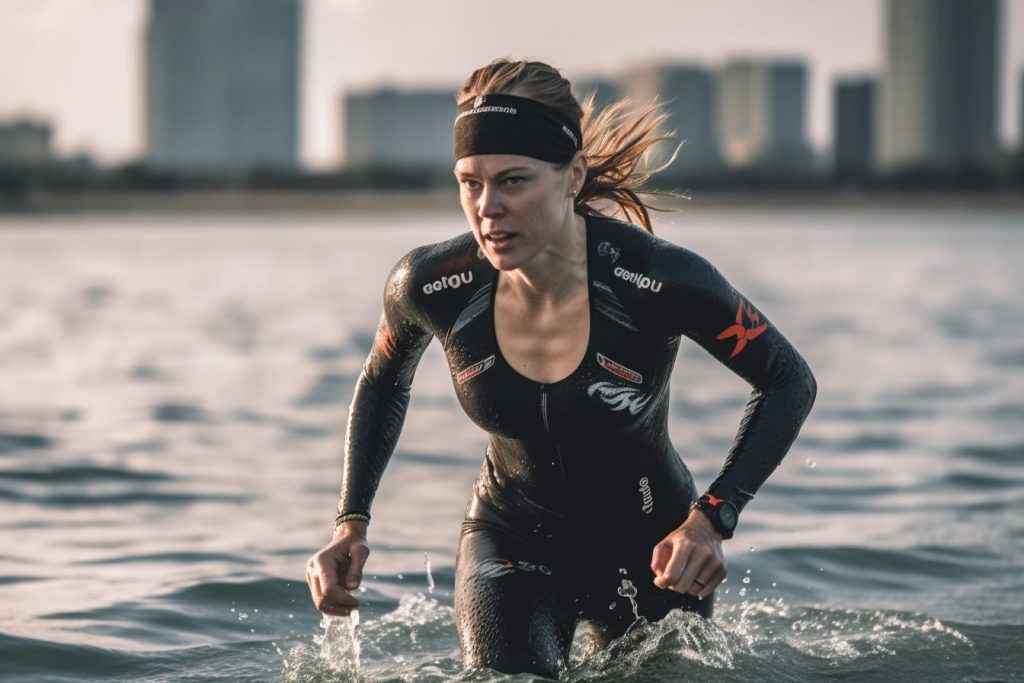Balancing training intensity and rest is crucial in sprint triathlon preparation. Sprint triathlons require athletes to complete a 750-meter swim, 20-kilometer bike ride, and 5-kilometer run. To perform at their best, athletes must train consistently and effectively while also allowing their bodies to recover. Finding the right balance between training intensity and rest is key to achieving optimal performance on race day.
The Importance of Rest Days in Sprint Triathlon Training
Sprint triathlon training is a demanding and challenging process that requires a lot of dedication and hard work. It involves three different disciplines, namely swimming, cycling, and running, which require different types of training and preparation. One of the most important aspects of sprint triathlon training is finding the right balance between training intensity and rest. In this article, we will discuss the importance of rest days in sprint triathlon training and how they can help you achieve your goals.
Rest days are an essential part of any training program, and sprint triathlon training is no exception. Rest days allow your body to recover and repair from the stress and strain of training. They also help to prevent injuries and reduce the risk of overtraining. Overtraining can lead to fatigue, decreased performance, and even injury, which can set back your training progress.
Rest days can take many forms, including complete rest, active recovery, or cross-training. Complete rest means taking a day off from all training activities and allowing your body to rest and recover. Active recovery involves low-intensity activities such as yoga, stretching, or light swimming, which help to increase blood flow and reduce muscle soreness. Cross-training involves engaging in other activities such as cycling, hiking, or weightlifting, which can help to improve your overall fitness and prevent boredom.

The frequency of rest days in sprint triathlon training depends on several factors, including your fitness level, training intensity, and overall health. Generally, it is recommended to have at least one rest day per week, but this can vary depending on your individual needs. If you are new to sprint triathlon training or have a history of injuries, you may need more rest days to allow your body to adapt and recover.
Rest days should not be seen as a sign of weakness or lack of commitment. They are an essential part of the training process and can help you achieve your goals faster. Rest days allow your body to recover and repair, which can lead to improved performance and reduced risk of injury. They also help to prevent burnout and keep you motivated and focused on your training goals.
In addition to rest days, other factors can affect your recovery and performance in sprint triathlon training. These include nutrition, hydration, sleep, and stress management. Proper nutrition and hydration are essential for fueling your body and providing the nutrients it needs to recover and repair. Sleep is also crucial for recovery, as it allows your body to repair and regenerate cells and tissues. Stress management techniques such as meditation, yoga, or deep breathing can help to reduce stress and improve recovery.
In conclusion, rest days are an essential part of sprint triathlon training and should not be overlooked or underestimated. They allow your body to recover and repair from the stress and strain of training, reduce the risk of injury, and improve performance. Rest days should be incorporated into your training program based on your individual needs and goals. In addition to rest days, proper nutrition, hydration, sleep, and stress management are also crucial for recovery and performance in sprint triathlon training. By finding the right balance between training intensity and rest, you can achieve your goals and become a successful sprint triathlete.
Maximizing Training Intensity without Overtraining
Balancing Training Intensity and Rest in Sprint Triathlon Preparation
Sprint triathlon is a challenging sport that requires a combination of endurance, strength, and speed. To prepare for a sprint triathlon, athletes need to balance their training intensity and rest to maximize their performance without overtraining.
Maximizing Training Intensity without Overtraining
Training intensity is a critical factor in sprint triathlon preparation. Athletes need to push themselves to their limits to improve their performance, but they also need to avoid overtraining, which can lead to injuries and burnout.
To maximize training intensity without overtraining, athletes should follow a structured training plan that includes a mix of high-intensity workouts and recovery days. High-intensity workouts should be challenging but not overwhelming, and athletes should gradually increase the intensity and duration of their workouts over time.
Recovery days are just as important as high-intensity workouts. Athletes need to give their bodies time to rest and recover after intense training sessions. Recovery days can include low-intensity workouts, stretching, and rest days.
In addition to following a structured training plan, athletes should also pay attention to their bodies and adjust their training intensity accordingly. If they feel tired or sore, they should take a break or reduce the intensity of their workouts. Ignoring the signs of overtraining can lead to injuries and setbacks in their training.

The Importance of Rest in Sprint Triathlon Preparation
Rest is just as important as training intensity in sprint triathlon preparation. Athletes need to give their bodies time to recover and rebuild after intense workouts. Rest days allow the body to repair damaged tissues, replenish energy stores, and reduce the risk of injuries.
Rest days can also help athletes avoid burnout and mental fatigue. Sprint triathlon training can be physically and mentally demanding, and athletes need to take breaks to recharge their batteries and stay motivated.
Rest days can include complete rest or low-intensity activities such as yoga, stretching, or swimming. Athletes should listen to their bodies and take rest days when they feel tired or sore.
Balancing Training Intensity and Rest in Sprint Triathlon Preparation
Balancing training intensity and rest is a delicate balance that requires careful planning and attention to the body’s signals. Athletes need to push themselves to their limits during high-intensity workouts, but they also need to give their bodies time to rest and recover.
To balance training intensity and rest, athletes should follow a structured training plan that includes a mix of high-intensity workouts and recovery days. They should also pay attention to their bodies and adjust their training intensity accordingly.
Rest days are just as important as high-intensity workouts in sprint triathlon preparation. Athletes need to give their bodies time to recover and avoid burnout and mental fatigue.
In conclusion, balancing training intensity and rest is essential for sprint triathlon preparation. Athletes need to push themselves to their limits during high-intensity workouts, but they also need to give their bodies time to rest and recover. By following a structured training plan and listening to their bodies, athletes can maximize their performance without overtraining.
The Role of Active Recovery in Balancing Training and Rest

Sprint triathlon preparation requires a delicate balance between training intensity and rest. Athletes must push themselves to improve their performance, but they also need to allow their bodies to recover. One way to achieve this balance is through active recovery.
Active recovery is a form of exercise that is less intense than the athlete’s regular training routine. It is designed to help the body recover from intense workouts while still maintaining fitness levels. Active recovery can include activities such as yoga, swimming, cycling, or light jogging.
The benefits of active recovery are numerous. It helps to increase blood flow to the muscles, which can reduce soreness and stiffness. It also helps to flush out lactic acid, which can build up in the muscles during intense exercise. Active recovery can also help to improve flexibility and range of motion, which can reduce the risk of injury.
In addition to these physical benefits, active recovery can also have mental benefits. It can help athletes to relax and reduce stress levels. It can also help to improve focus and concentration, which can be beneficial during training and competition.
When incorporating active recovery into a sprint triathlon training program, it is important to do so in a way that complements the athlete’s regular training routine. Active recovery should be done on days when the athlete is not doing intense workouts. It should also be done at a low intensity level, so as not to interfere with the athlete’s recovery.
One way to incorporate active recovery into a sprint triathlon training program is to schedule it on the athlete’s rest days. This can help to keep the athlete active and engaged in their training program, while still allowing their body to recover. Another way to incorporate active recovery is to use it as a warm-up or cool-down activity before or after intense workouts.
It is important to note that active recovery should not be used as a substitute for rest. Rest days are still an important part of any training program, and athletes should take them seriously. Active recovery should be used as a supplement to rest, not a replacement for it.
When designing a sprint triathlon training program, it is important to consider the role of active recovery in balancing training intensity and rest. By incorporating active recovery into the program, athletes can improve their performance while reducing the risk of injury and burnout. Active recovery can help athletes to achieve their goals while maintaining a healthy and balanced approach to training.

Strategies for Incorporating Rest into Your Sprint Triathlon Training Plan
Sprint triathlon training is a demanding process that requires a delicate balance between training intensity and rest. While it is important to push yourself during training to improve your performance, it is equally important to allow your body to recover and avoid overtraining. In this article, we will discuss strategies for incorporating rest into your sprint triathlon training plan.
The first step in incorporating rest into your training plan is to understand the importance of rest. Rest is essential for allowing your body to recover and repair itself after intense training sessions. Without adequate rest, your body will not be able to adapt to the stress of training, and you may experience decreased performance, increased risk of injury, and burnout.
One effective strategy for incorporating rest into your training plan is to schedule rest days into your weekly routine. Rest days should be planned just like training days, and should be treated with the same level of importance. During rest days, you should avoid any strenuous activity and focus on recovery. This may include stretching, foam rolling, or other forms of active recovery.
Another strategy for incorporating rest into your training plan is to vary the intensity of your workouts. While it is important to push yourself during training, it is also important to vary the intensity of your workouts to avoid overtraining. This may include incorporating low-intensity workouts, such as yoga or swimming, into your training plan.
In addition to rest days and varying the intensity of your workouts, it is also important to listen to your body. If you are feeling fatigued or experiencing pain, it may be a sign that you need to take a break from training. Ignoring these warning signs can lead to injury and burnout, and can ultimately hinder your performance.
Finally, it is important to prioritize sleep and nutrition in your training plan. Sleep is essential for allowing your body to recover and repair itself, and inadequate sleep can lead to decreased performance and increased risk of injury. Similarly, proper nutrition is essential for fueling your body and providing the nutrients it needs to recover from training.
In conclusion, balancing training intensity and rest is essential for success in sprint triathlon training. By incorporating rest days into your weekly routine, varying the intensity of your workouts, listening to your body, and prioritizing sleep and nutrition, you can ensure that your body is able to recover and adapt to the stress of training. With a well-balanced training plan, you can achieve your goals and perform at your best on race day.
The Benefits of Periodization in Balancing Training Intensity and Rest
Balancing Training Intensity and Rest in Sprint Triathlon Preparation
Sprint triathlon is a challenging sport that requires a combination of endurance, strength, and speed. To prepare for a sprint triathlon, athletes need to follow a well-structured training program that balances training intensity and rest. This is where periodization comes in.
Periodization is a training method that involves dividing the training program into different phases, each with a specific goal and focus. The purpose of periodization is to optimize performance and prevent overtraining by balancing training intensity and rest.
The benefits of periodization in balancing training intensity and rest are numerous. Firstly, it allows athletes to gradually increase their training load over time, which helps to prevent injury and burnout. By starting with a lower training load and gradually increasing it, athletes can build up their endurance and strength without putting too much stress on their bodies.
Secondly, periodization allows athletes to focus on different aspects of their training at different times. For example, during the base phase, the focus is on building endurance and aerobic capacity. During the strength phase, the focus is on building strength and power. And during the taper phase, the focus is on reducing training volume and intensity to allow for recovery and peak performance.
Thirdly, periodization helps to prevent plateaus in performance. By constantly changing the training stimulus, athletes can continue to make progress and improve their performance over time. This is because the body adapts to the training stimulus, and if the stimulus remains the same for too long, the body will stop adapting and performance will plateau.
Finally, periodization helps to prevent overtraining. Overtraining occurs when an athlete trains too hard and too often without allowing for adequate rest and recovery. This can lead to a decrease in performance, injury, and burnout. By balancing training intensity and rest, periodization helps to prevent overtraining and allows athletes to train at their optimal level.
In conclusion, periodization is a valuable training method for balancing training intensity and rest in sprint triathlon preparation. By dividing the training program into different phases, each with a specific goal and focus, athletes can gradually increase their training load, focus on different aspects of their training at different times, prevent plateaus in performance, and prevent overtraining. To optimize performance and prevent injury and burnout, athletes should incorporate periodization into their training program.
Q&A
1. What is the importance of balancing training intensity and rest in sprint triathlon preparation?
Balancing training intensity and rest is important in sprint triathlon preparation to prevent overtraining, reduce the risk of injury, and improve overall performance.
2. How can athletes determine the appropriate training intensity for sprint triathlon preparation?
Athletes can determine the appropriate training intensity for sprint triathlon preparation by using heart rate monitors, power meters, or perceived exertion scales to track their effort levels during training sessions.
3. What are some effective rest and recovery strategies for sprint triathlon athletes?
Effective rest and recovery strategies for sprint triathlon athletes include getting enough sleep, incorporating active recovery activities like yoga or swimming, and taking rest days to allow the body to recover.
4. How often should sprint triathlon athletes incorporate rest and recovery into their training plans?
Sprint triathlon athletes should incorporate rest and recovery into their training plans on a regular basis, with at least one rest day per week and active recovery sessions scheduled throughout the week.
5. What are some signs that an athlete may be overtraining and in need of more rest?
Signs that an athlete may be overtraining and in need of more rest include persistent fatigue, decreased performance, increased risk of injury, and changes in mood or motivation.Balancing training intensity and rest is crucial in sprint triathlon preparation. It is important to have a structured training plan that includes both high-intensity workouts and adequate rest and recovery time. Overtraining can lead to injury and burnout, while not training enough can result in poor performance on race day. Finding the right balance is key to achieving optimal results in sprint triathlon preparation.


Leave a Reply